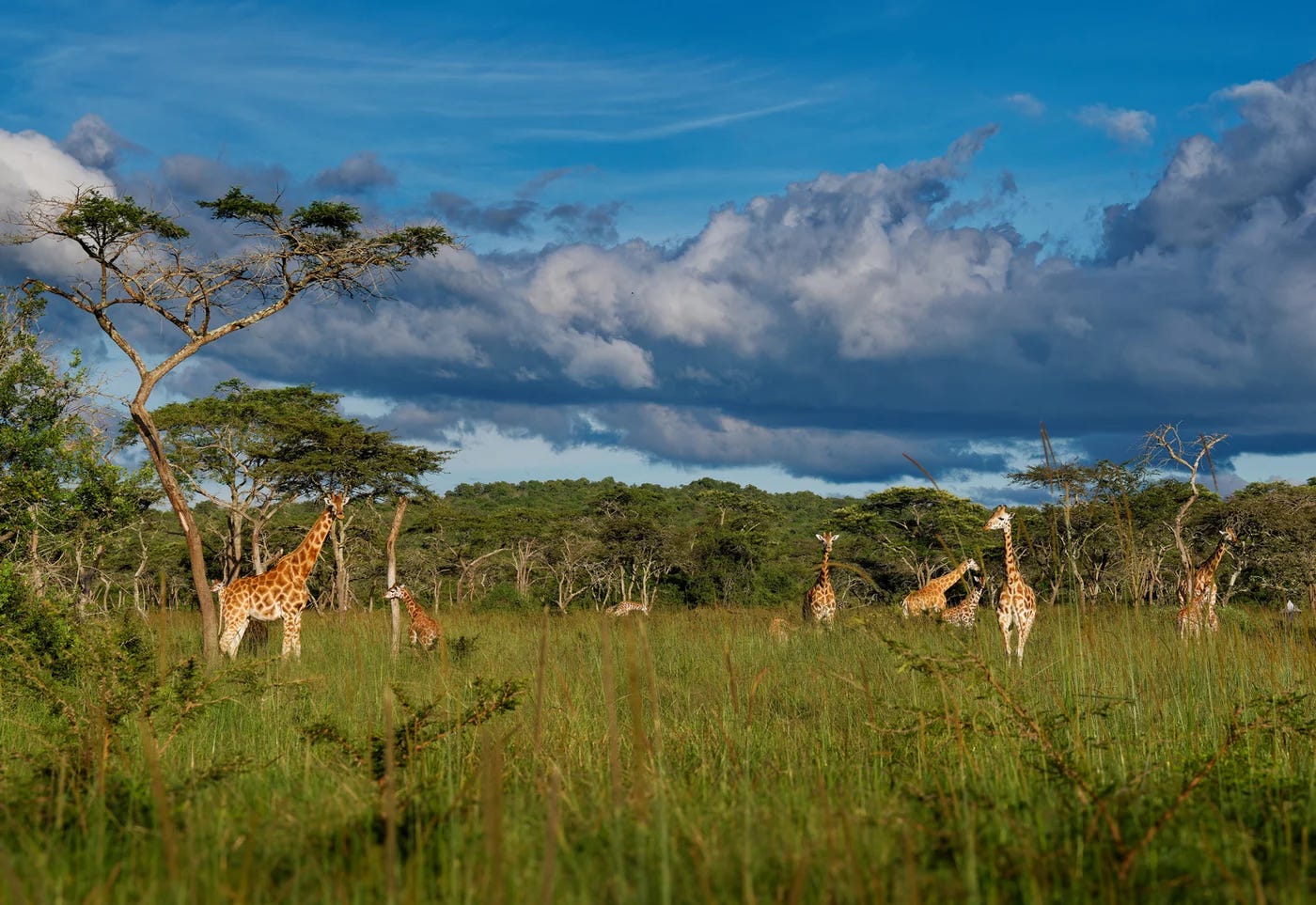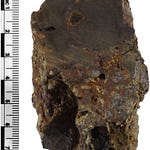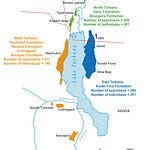By the time a small group of humans stepped into Eurasia around 50,000 years ago, all earlier attempts at migration beyond Africa had faded into evolutionary silence. Why did this single dispersal succeed when others had failed? A new study, published in Nature1 by Emily Hallett, Michela Leonardi, Eleanor Scerri, and colleagues, suggests that the answer may lie not in a sudden innovation or favorable climate window, but in something more gradual and deeply ecological: a profound expansion in the habitats Homo sapiens could call home.
"Humans dispersing out of Africa after 50,000 years ago were equipped with a distinctive ecological flexibility among hominins," write the authors. "This provided a key mechanism for their adaptive success."

The Problem of Failed Migrations
We know from fossil evidence that Homo sapiens ventured out of Africa multiple times before the successful dispersal. Sites from Israel to Arabia preserve traces of these early excursions, dating back over 100,000 years. Yet none of those lineages appear in the DNA of people alive today. Whatever drove them to leave, it wasn't enough to sustain them outside Africa.
Some have blamed technology. Others have pointed to climate—a series of "green corridors" opening during humid interglacials. But no single explanation has held up to scrutiny. The tools used by those early migrants weren’t radically different from those used later. And while climate change certainly influenced migration corridors, favorable conditions didn’t always lead to long-term settlement.
This new research offers a different lens.
A Wider Niche at Home
The research team compiled a comprehensive database of 479 radiometrically dated archaeological sites across Africa spanning the last 120,000 years. They then used species distribution models (SDMs) to map the kinds of environments those sites were located in, and how that changed through time. The central question: did the ecological range of Homo sapiens expand before their global dispersal?
The answer was yes—emphatically so. Beginning around 70,000 years ago, human populations began occupying a dramatically broader array of habitats across Africa. Not just savannahs and woodlands, but dense tropical forests and hyper-arid deserts. This ecological expansion wasn't due to climate alone. Compared to control models where niche remained fixed, the changes observed required behavioral or technological flexibility on the part of humans themselves.
"Use of areas in which the wettest quarter was both warmer and wetter increased," the study notes. "Use of deserts expanded progressively, underpinned by increased use of regions with large annual temperature ranges and sparse vegetation."
These were not the easiest places to live. Surviving in such regions likely required new foraging strategies, broader diets, long-distance networking, and perhaps storage or mobility innovations. In other words, adaptability became the hallmark of Homo sapiens.
The Timing of Success
Critically, this expansion in the human niche began well before the major out-of-Africa event. By the time populations left the continent, they had already proven themselves capable of surviving in highly variable environments. Earlier migrations lacked this versatility. They were, in ecological terms, narrower.
This broadened niche didn’t mean larger populations necessarily. Arid and forested zones often have lower carrying capacities. But it did mean that human groups could survive in more patchy, marginal environments—and move between them.
"The expansion of the human niche indicates that humans were able to move among several habitats and locations, probably increasing the encounter rate between different groups over time," the authors write.
Implications for Human Evolution
These findings add weight to the idea that Homo sapiens did not follow a linear path toward modernity, but rather evolved mosaically across Africa. Regions as different as West African forests, the Sahel, and the Horn of Africa all contributed to this expanding behavioral repertoire.
By 50,000 years ago, this flexibility paid off. It wasn’t superior spears or symbolic thinking that distinguished the successful migrants from those who failed—those traits already existed in Africa. It was, instead, a learned resilience. A capacity to thrive in ecosystems ranging from dripping jungles to desolate plains.
That same flexibility would allow our species to eventually occupy the Arctic, the Amazon, and even orbit.
Related Research
d'Errico, F., Banks, W. E., et al. (2017). Identifying early modern human ecological niche expansions and associated cultural dynamics in the South African Middle Stone Age. PNAS, 114(30), 7869–7876. https://doi.org/10.1073/pnas.1620752114
Roberts, P., & Stewart, B. A. (2018). Defining the 'generalist specialist' niche for Pleistocene Homo sapiens. Nature Human Behaviour, 2, 542–550. https://doi.org/10.1038/s41562-018-0362-9
Zeller, E., Timmermann, A. (2024). The evolving three-dimensional landscape of human adaptation. Science Advances, 10, eadq3613. https://doi.org/10.1126/sciadv.adq3613
Beyer, R. M., Krapp, M., & Manica, A. (2020). High-resolution terrestrial climate, bioclimate and vegetation for the last 120,000 years. Scientific Data, 7, 236. https://doi.org/10.1038/s41597-020-0535-3
Hallett, E. Y., Leonardi, M., Cerasoni, J. N., Will, M., Beyer, R., Krapp, M., Kandel, A. W., Manica, A., & Scerri, E. M. L. (2025). Major expansion in the human niche preceded out of Africa dispersal. Nature, 1–7. https://doi.org/10.1038/s41586-025-09154-0









